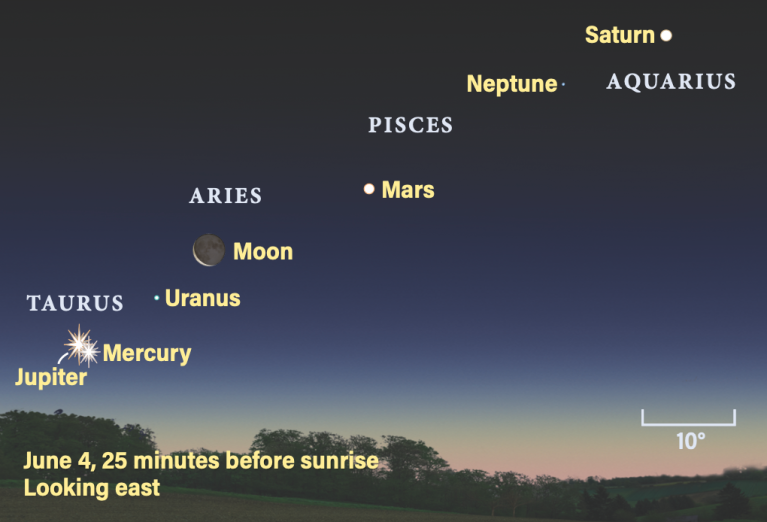How to see the planet parade near Cape Canaveral, Florida?
The best time to see most of these planets will be between 5 a.m. - 6 a.m. A location with a clear view of the eastern horizon and without the interference of bright city lights is ideal.The planets that are visible will appear in the sky as non-twinkling "stars". Here's what to look for during the morning show:
More here ;
https://www.floridatoday.com/story/...pe-canaveral-mars-jupiter-saturn/73835559007/
^^^ Has a short video...!!!
After Monday, June 3, the show is not necessarily over. While not in the same positions, or in an "alignment", the planets will rise at similar times all throughout June.































































